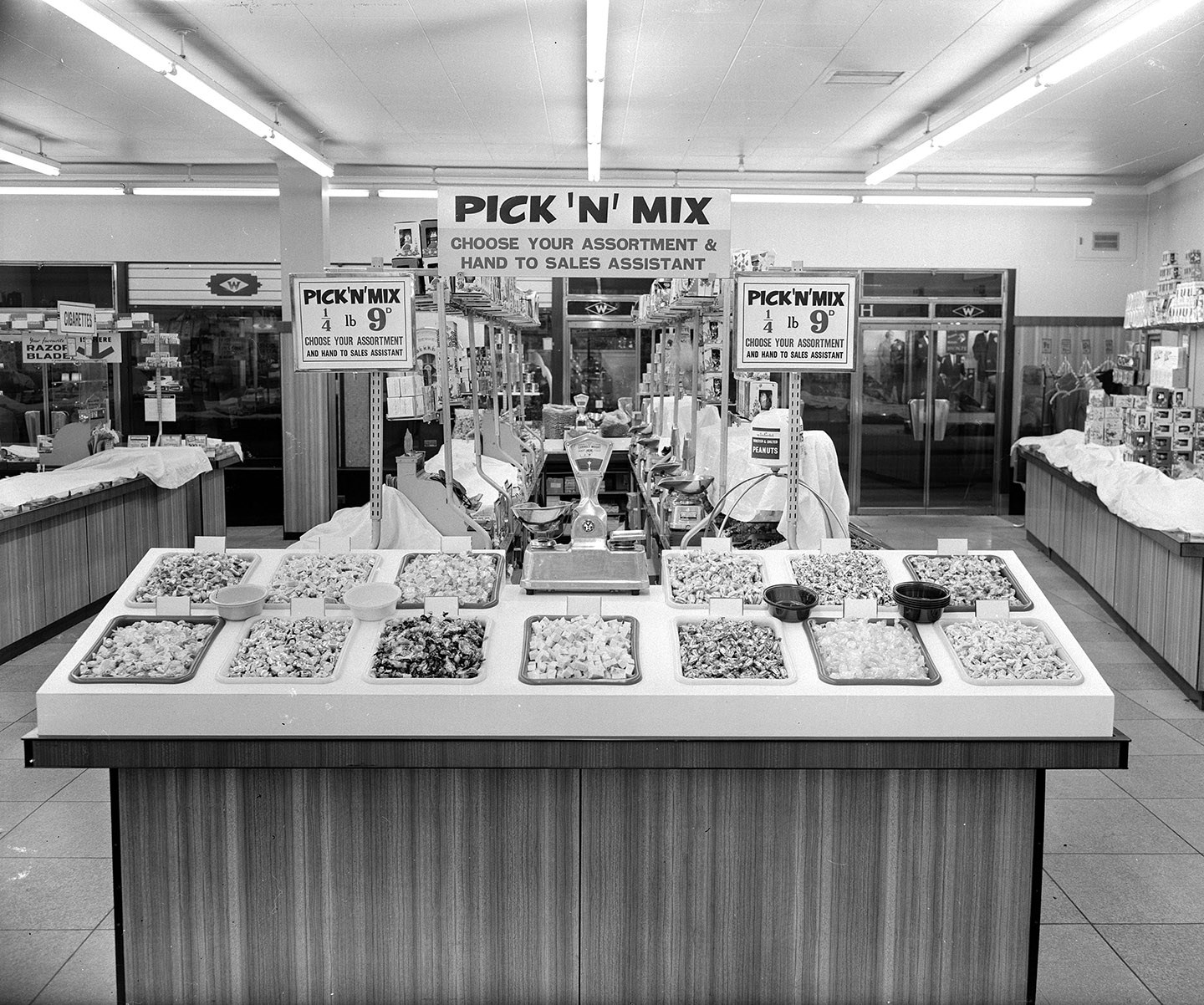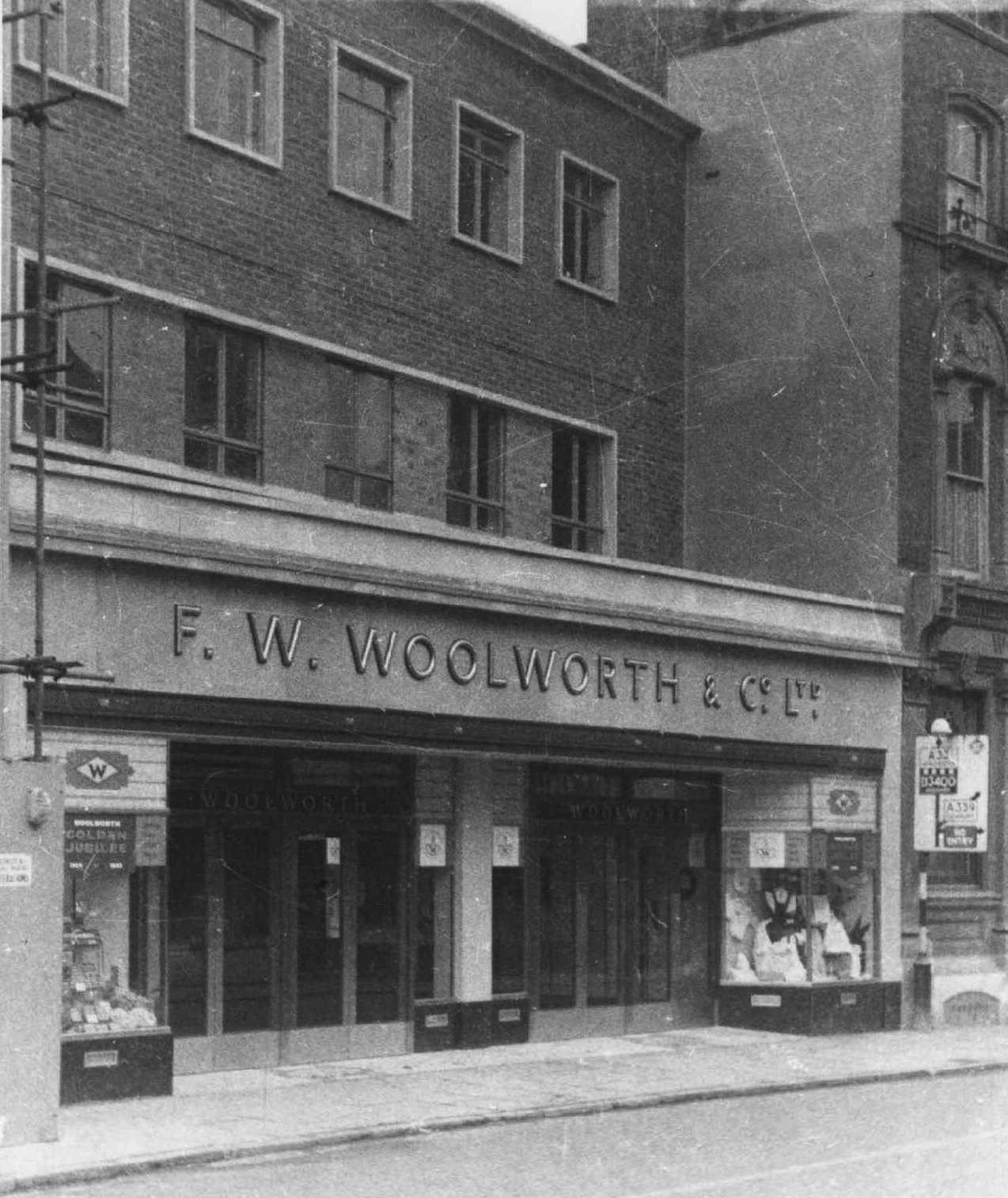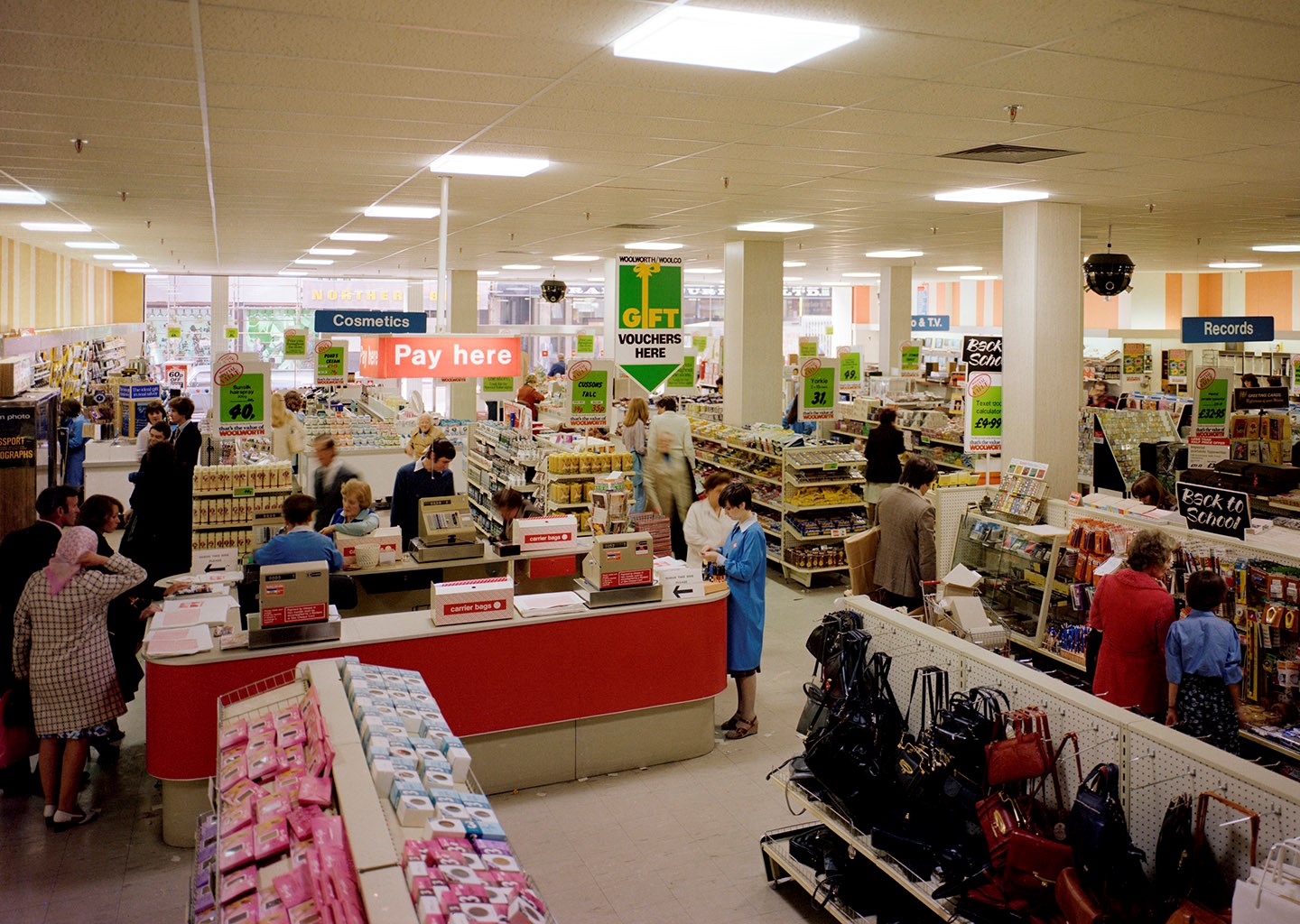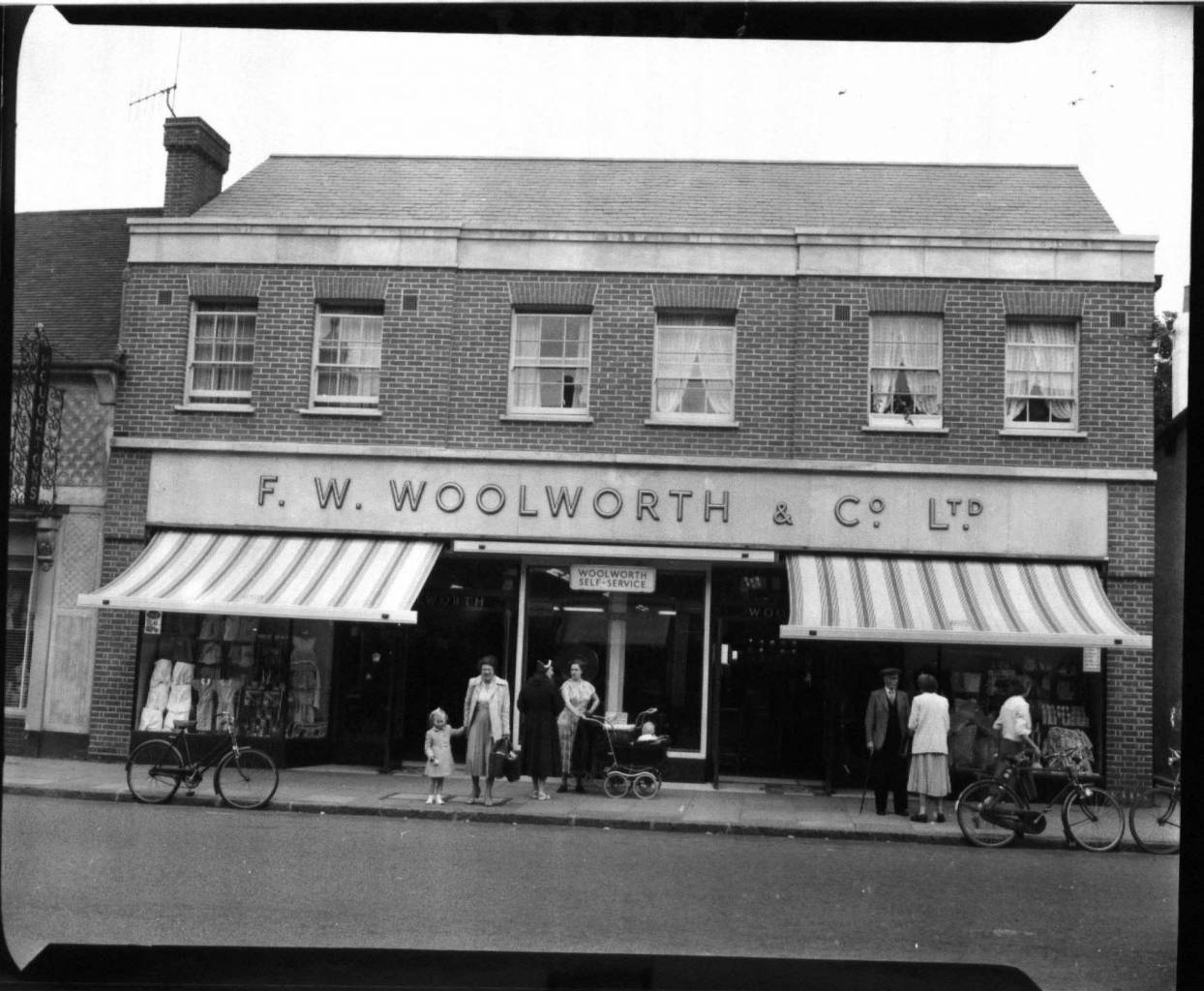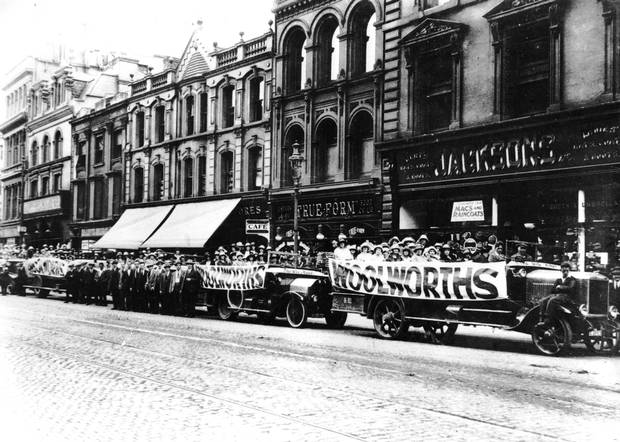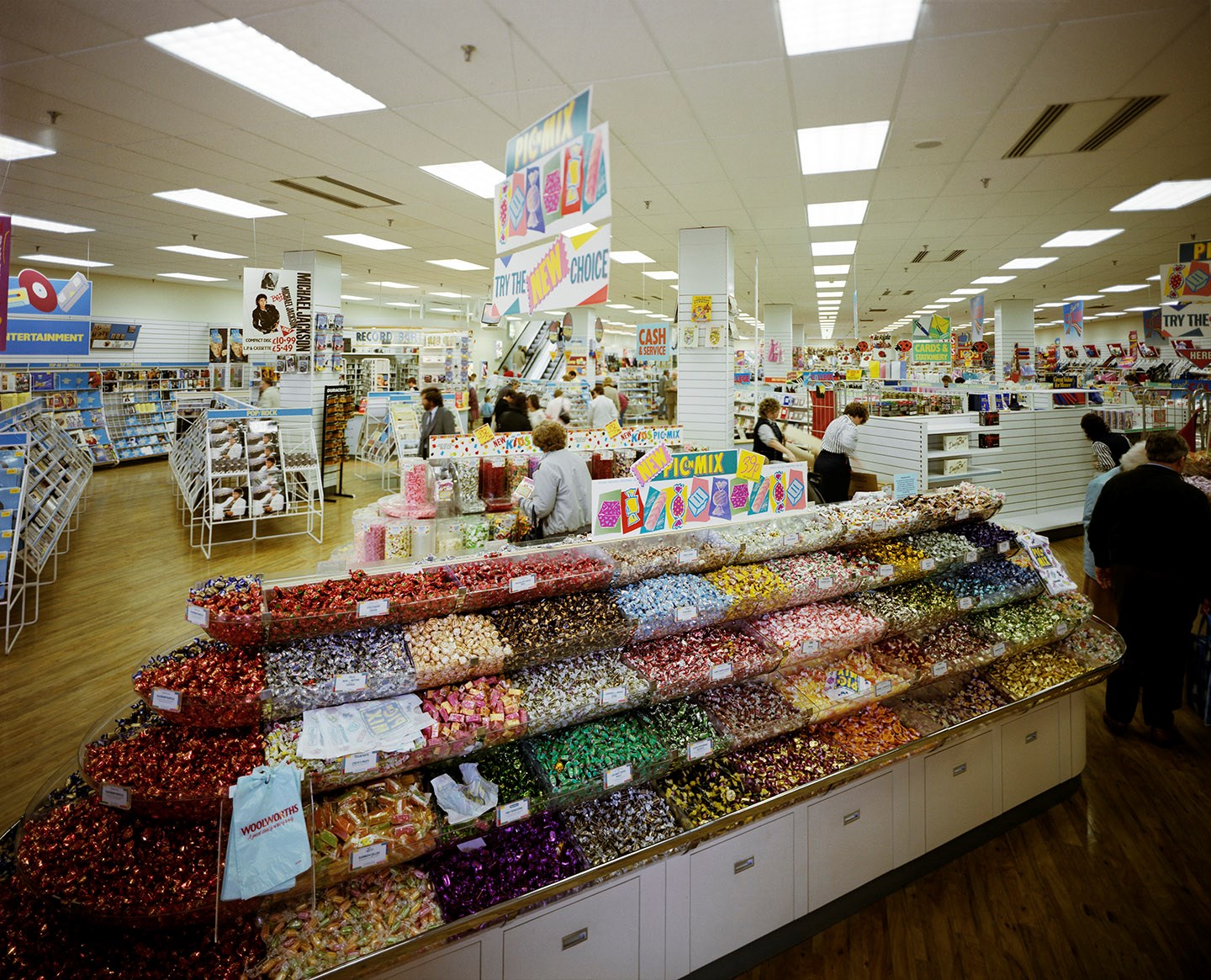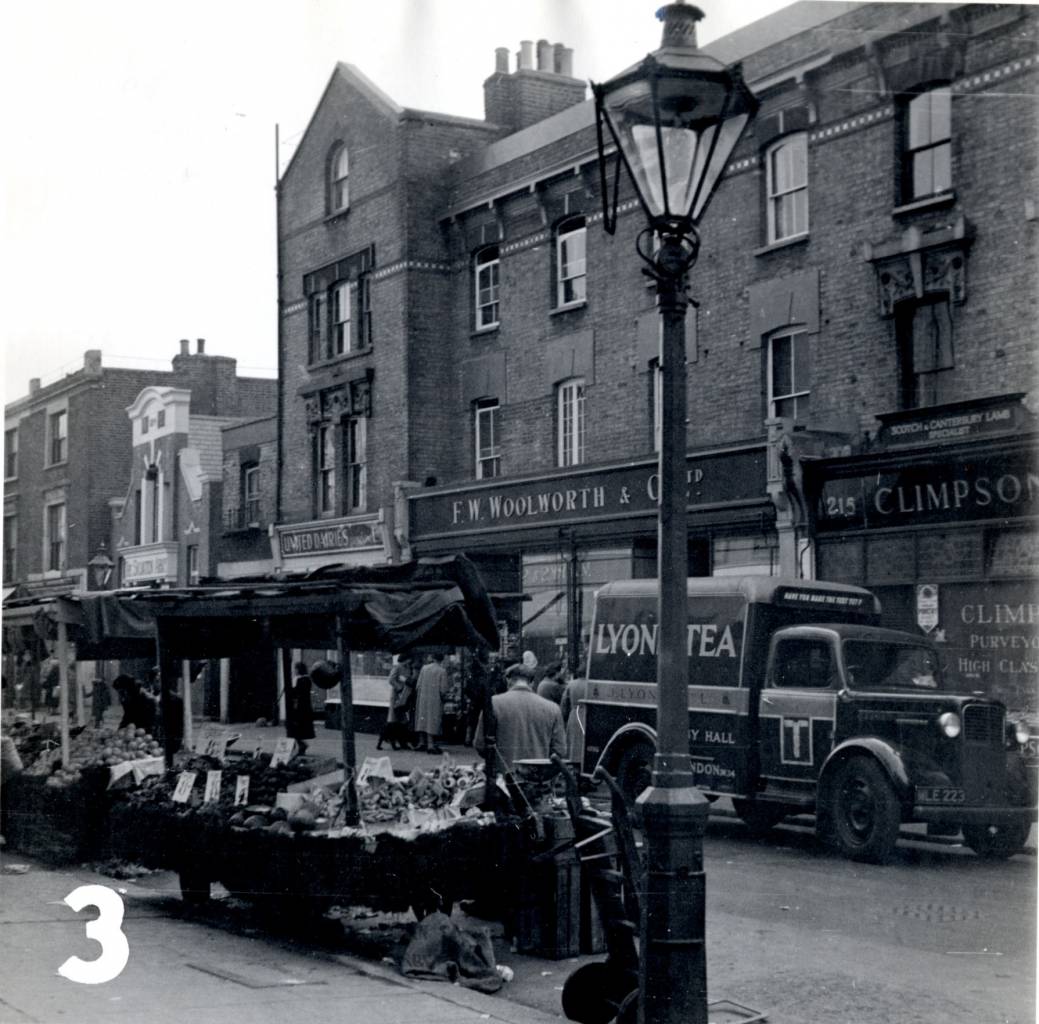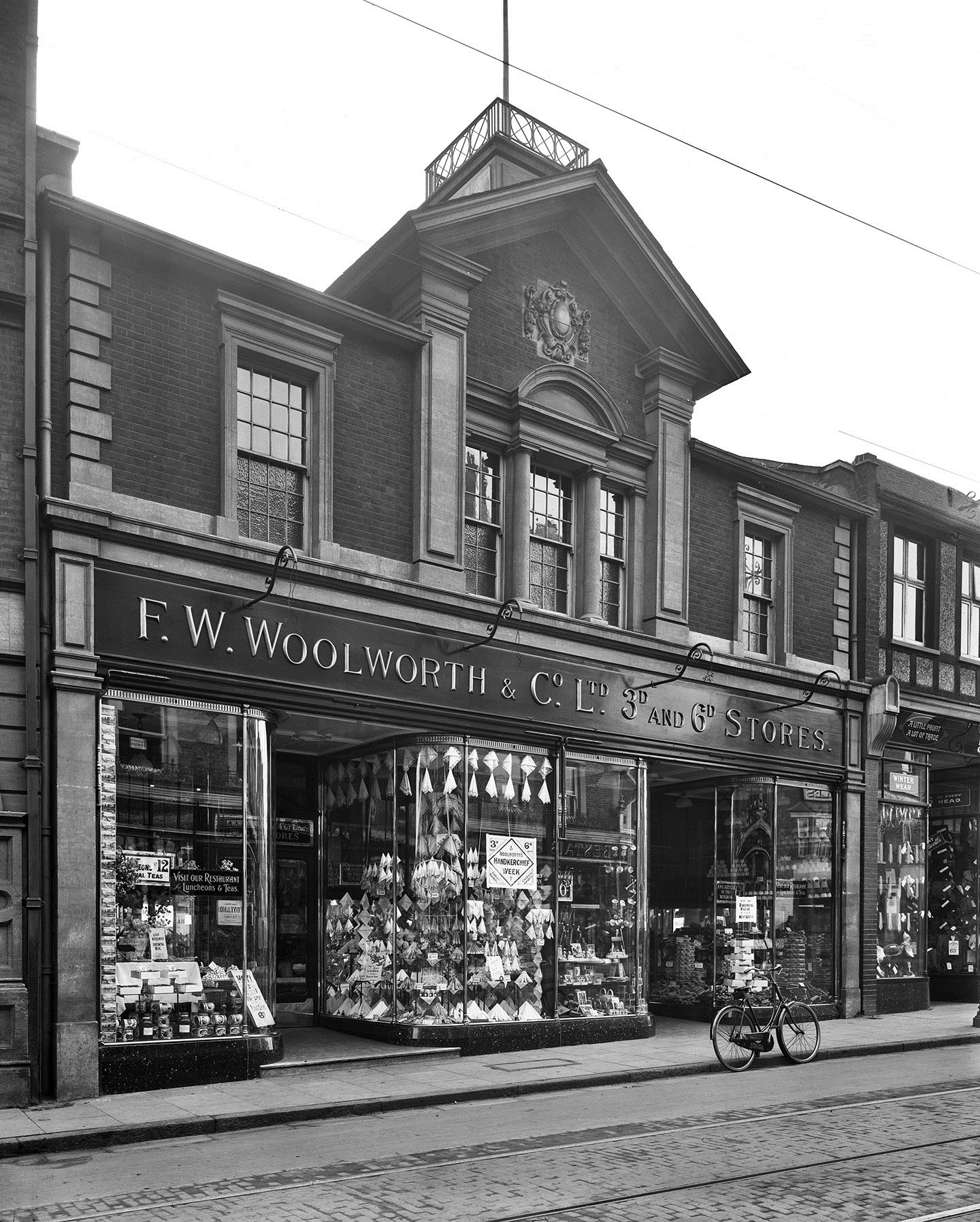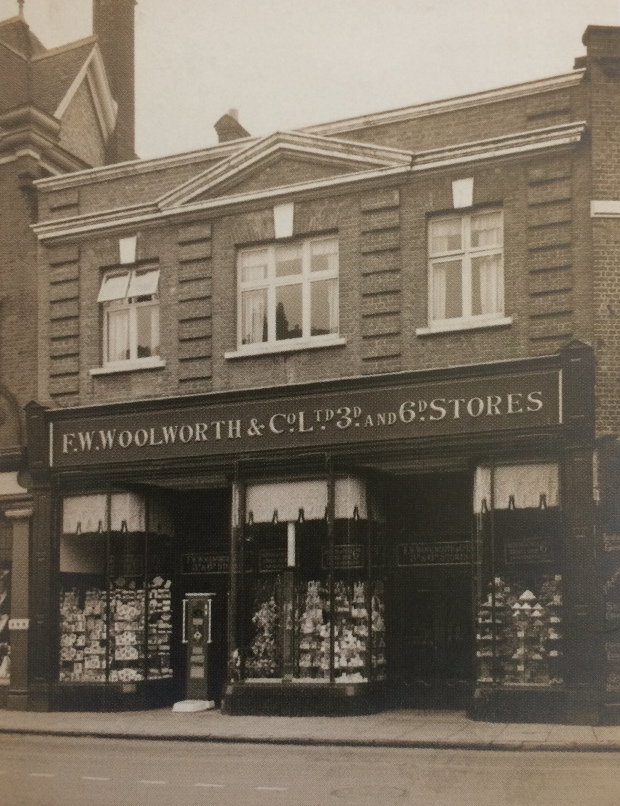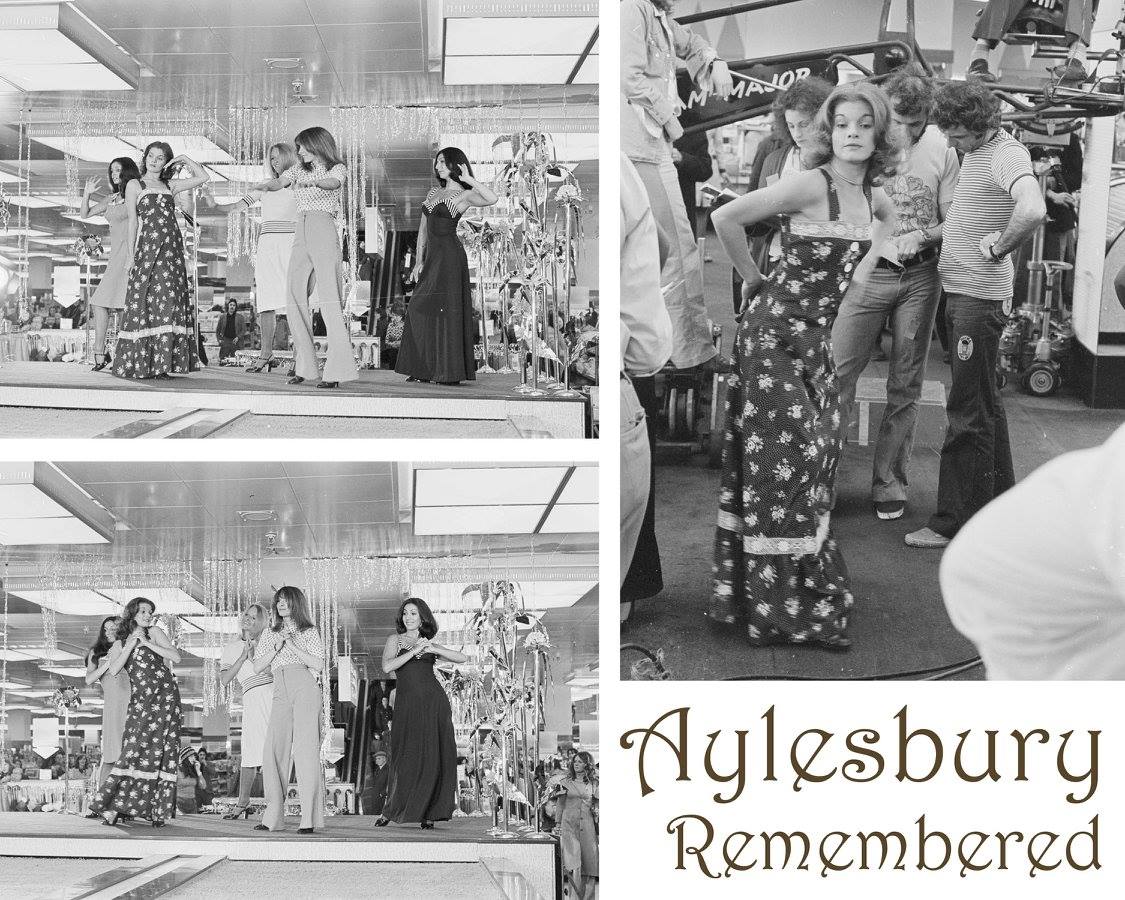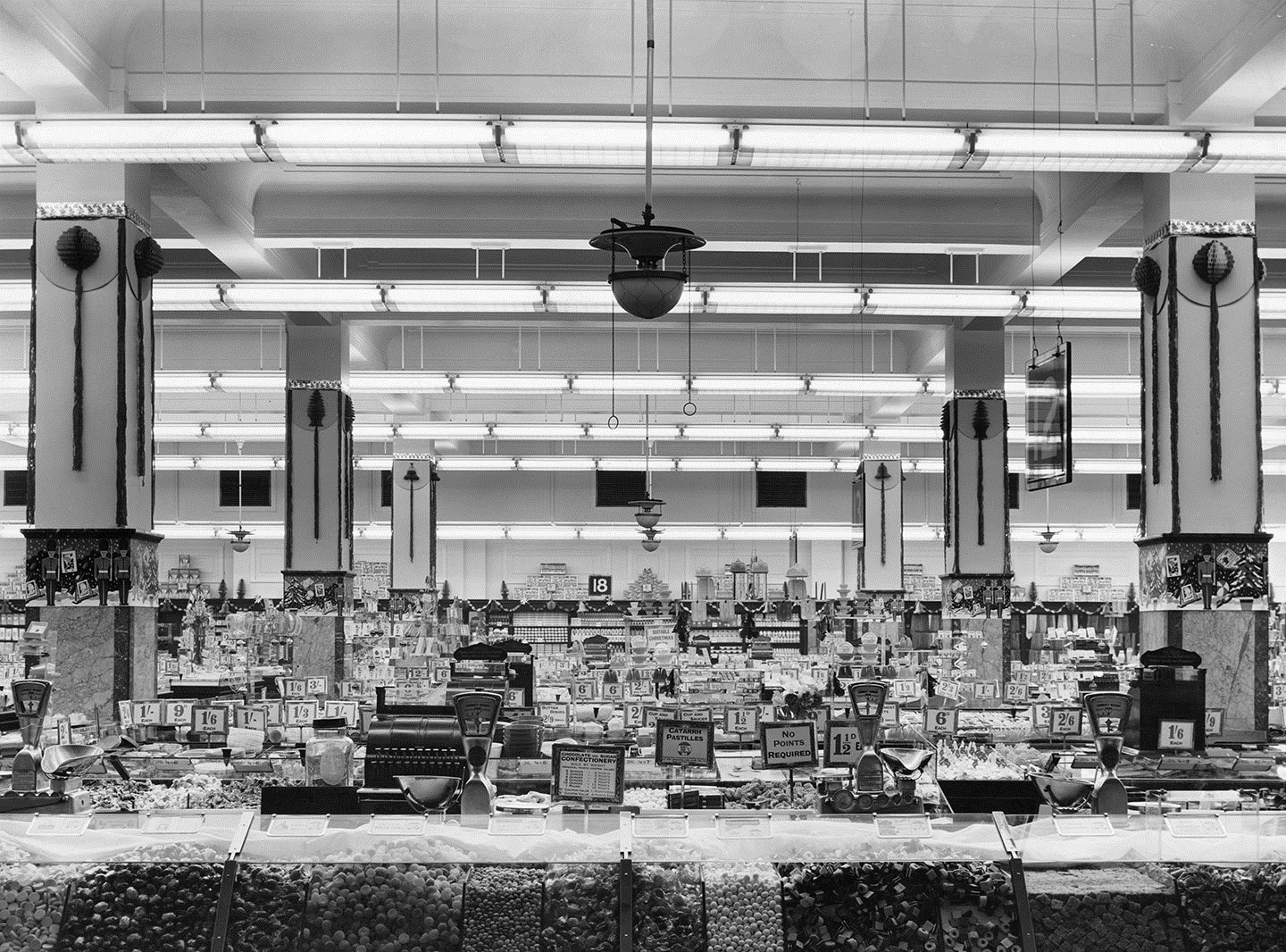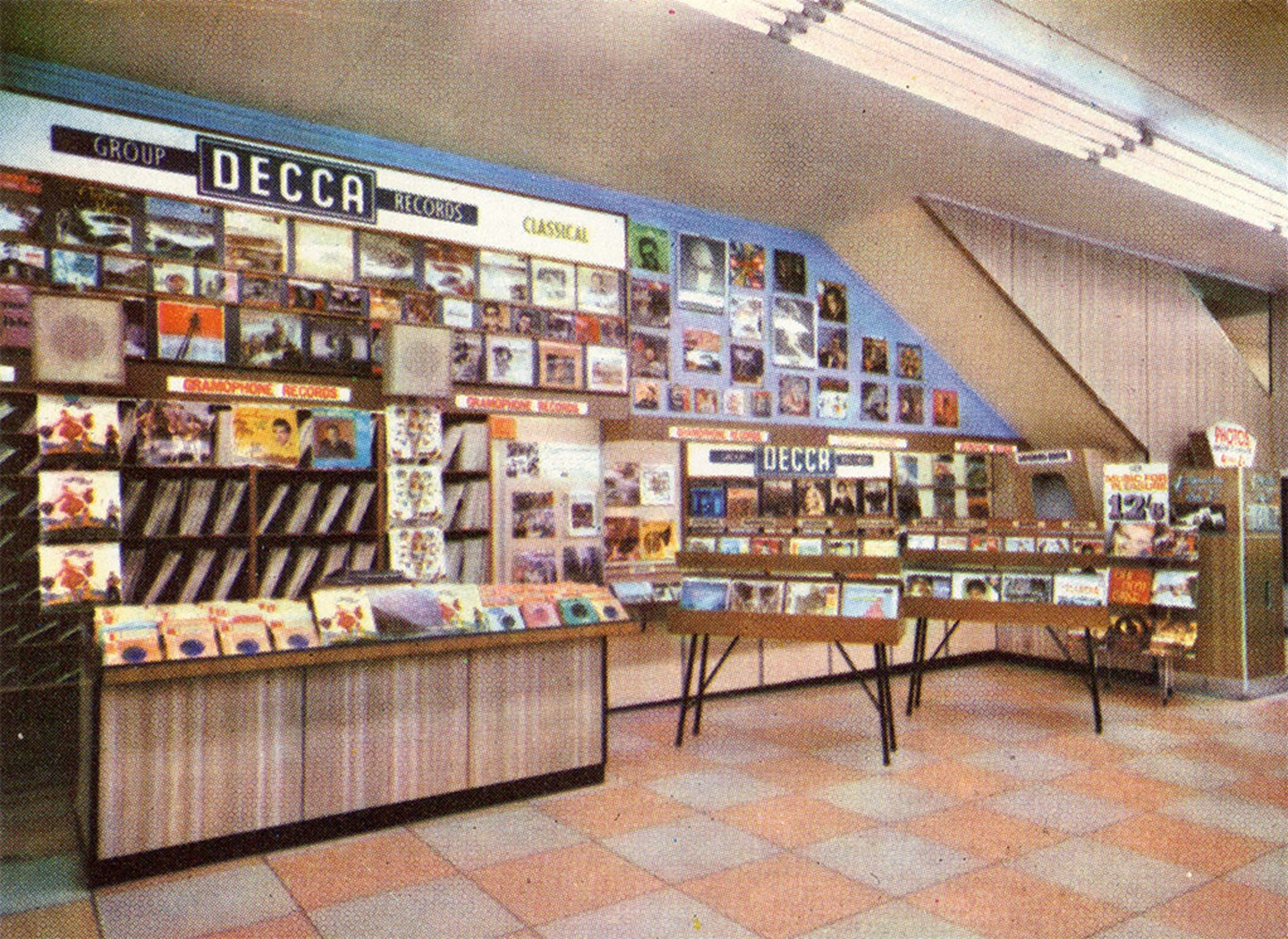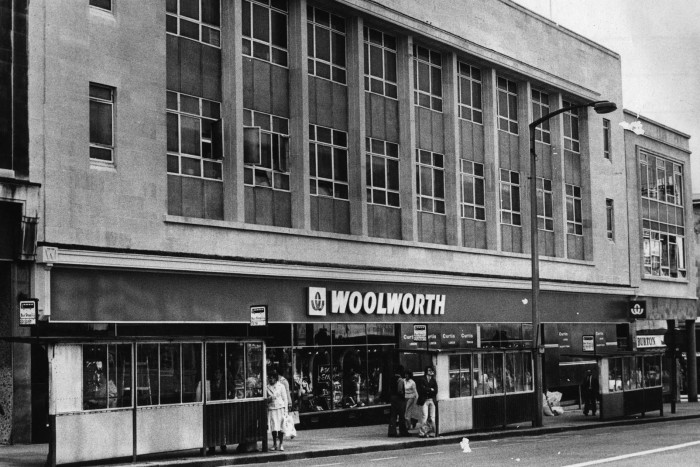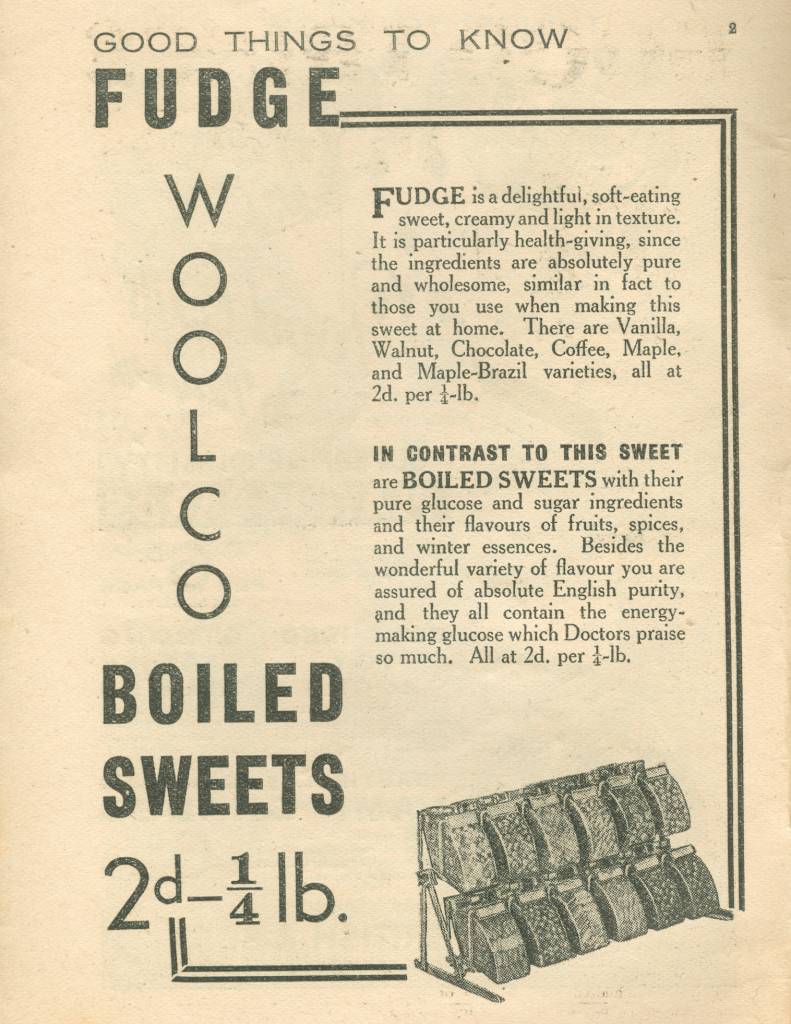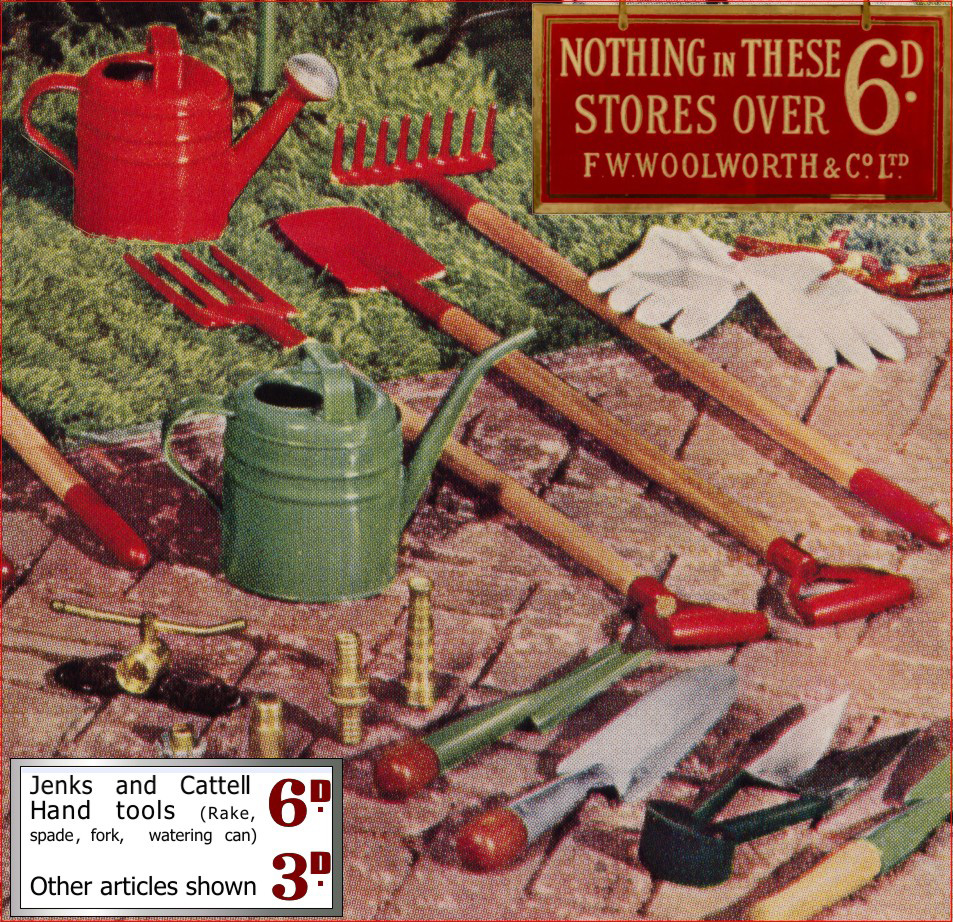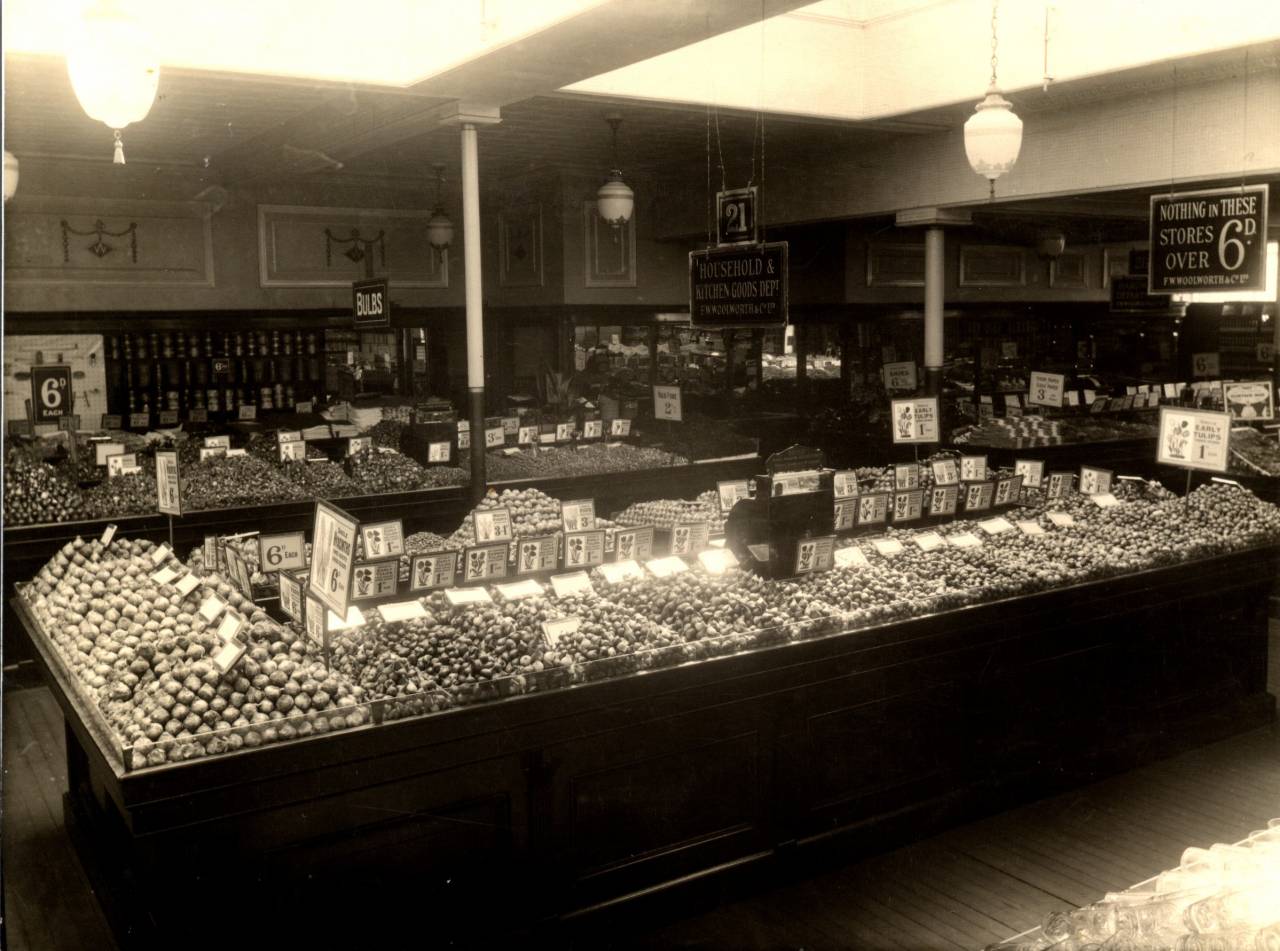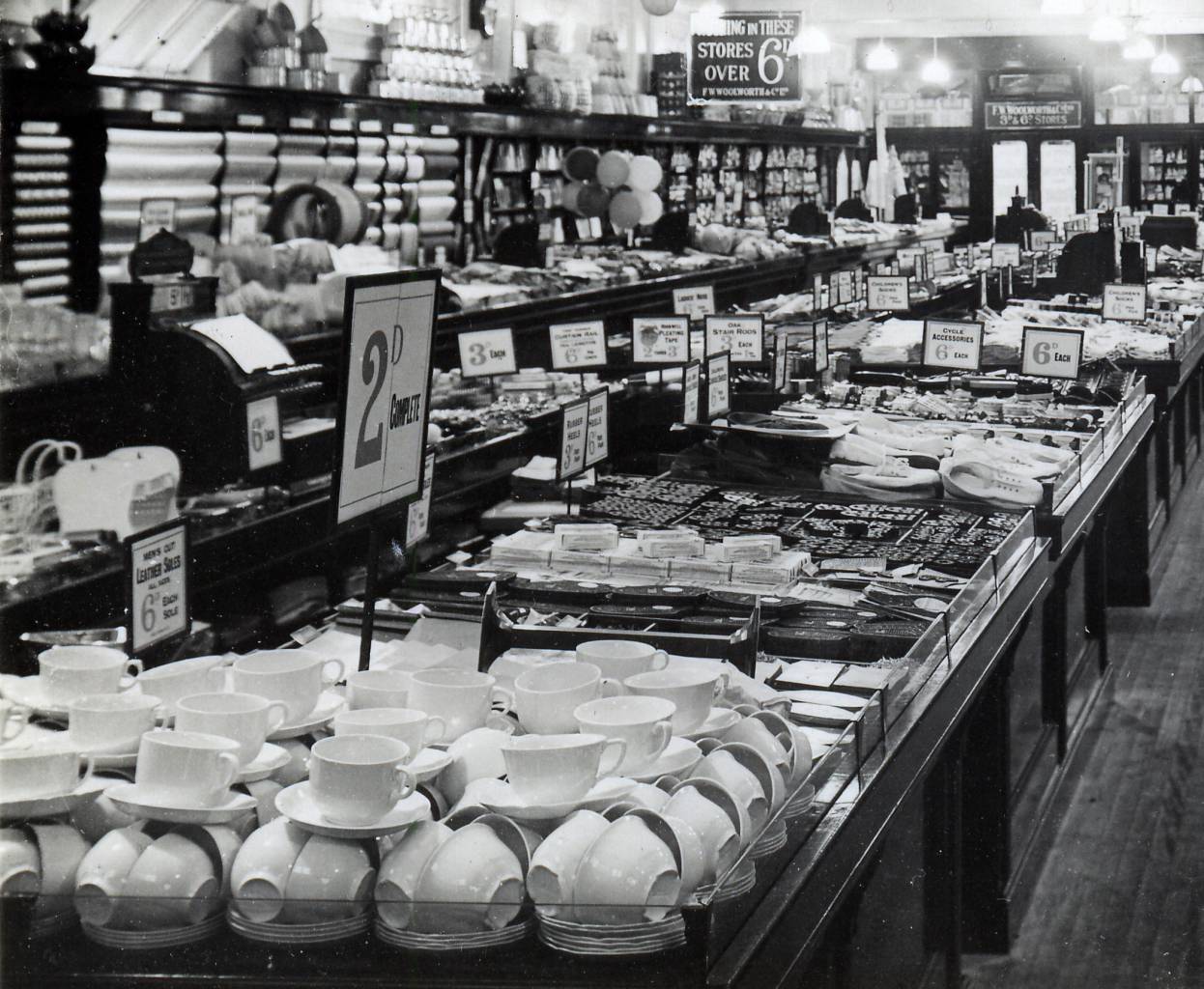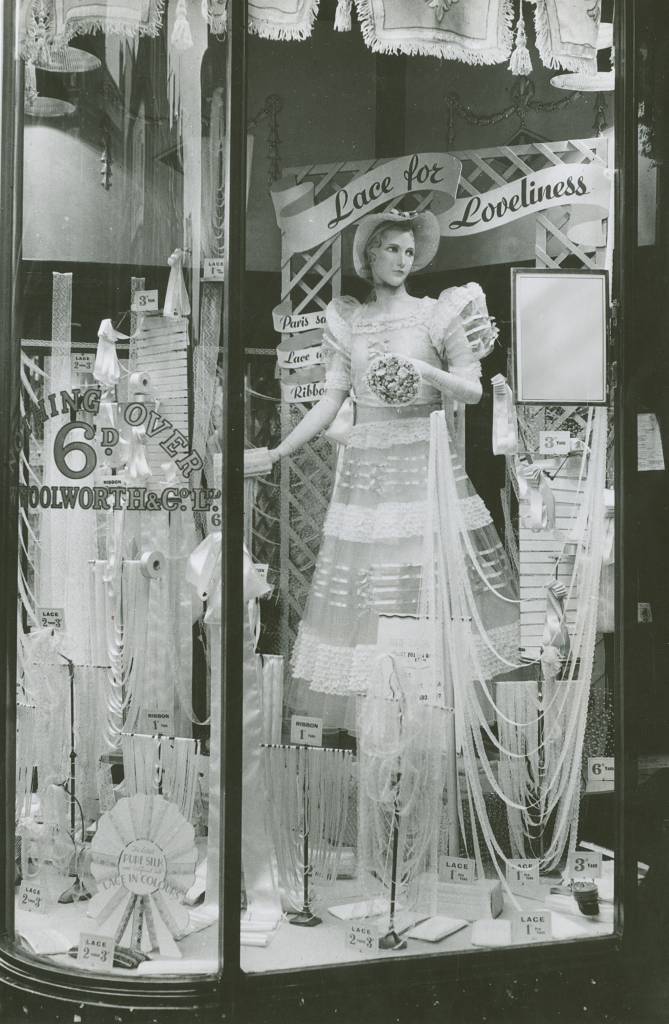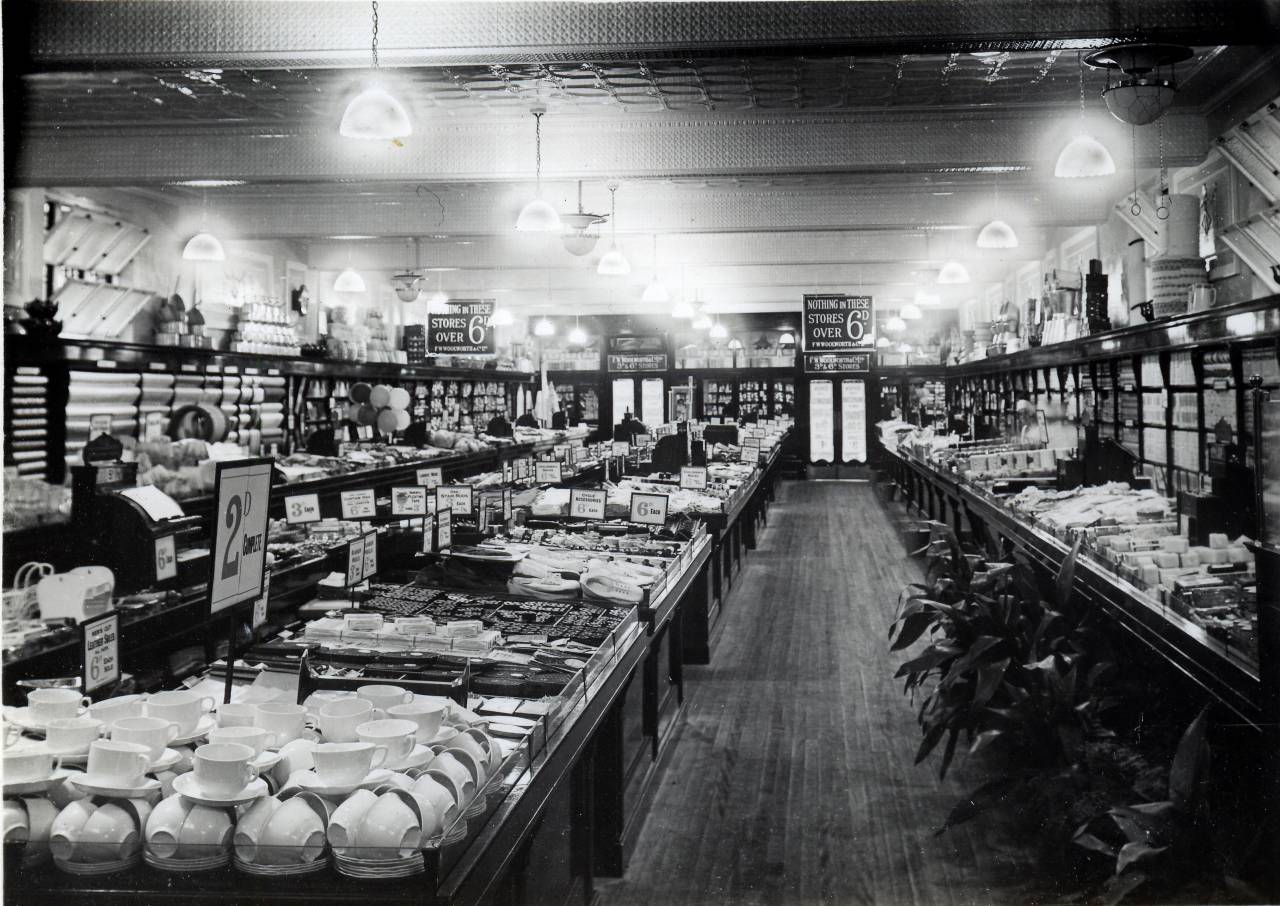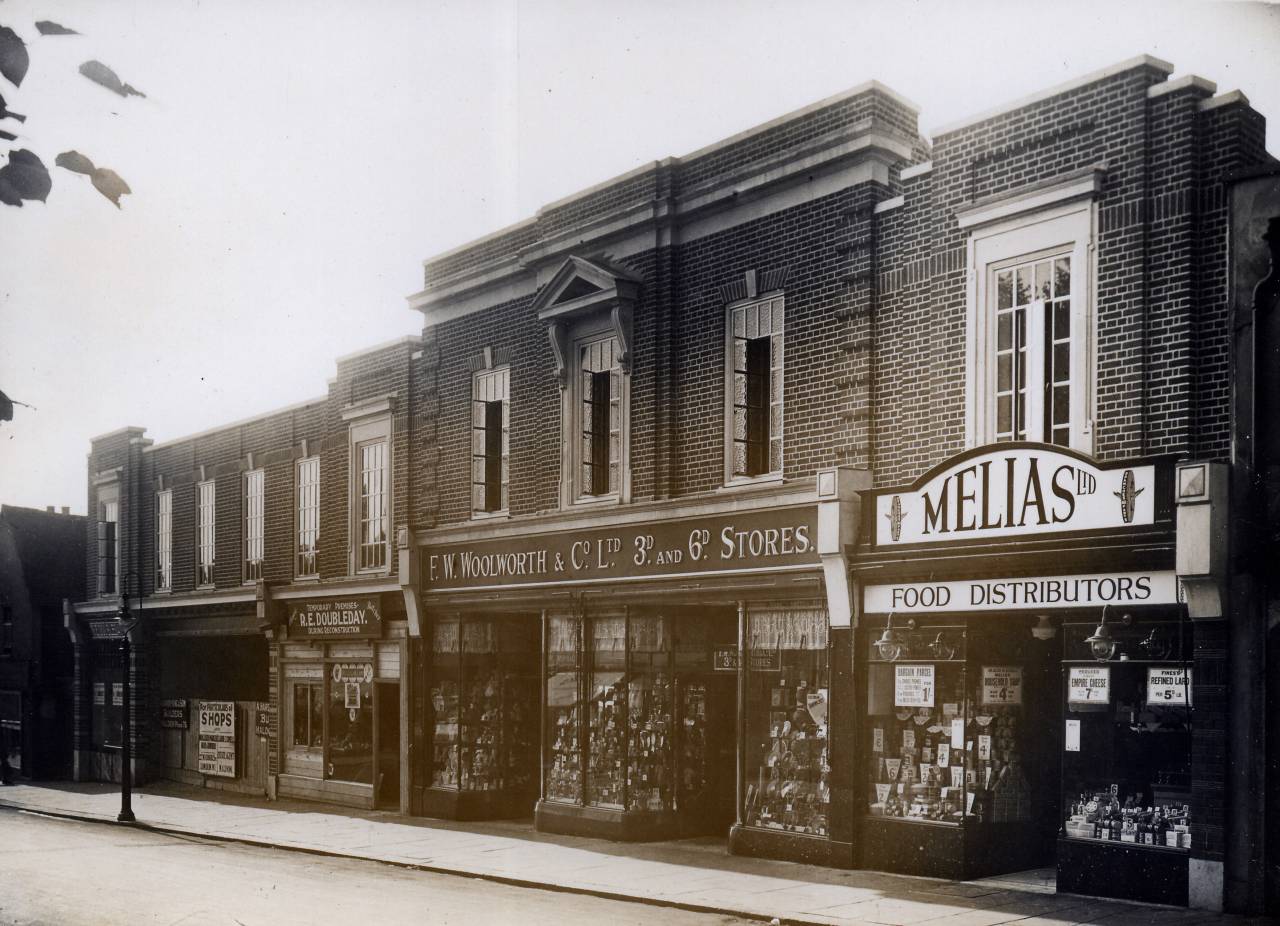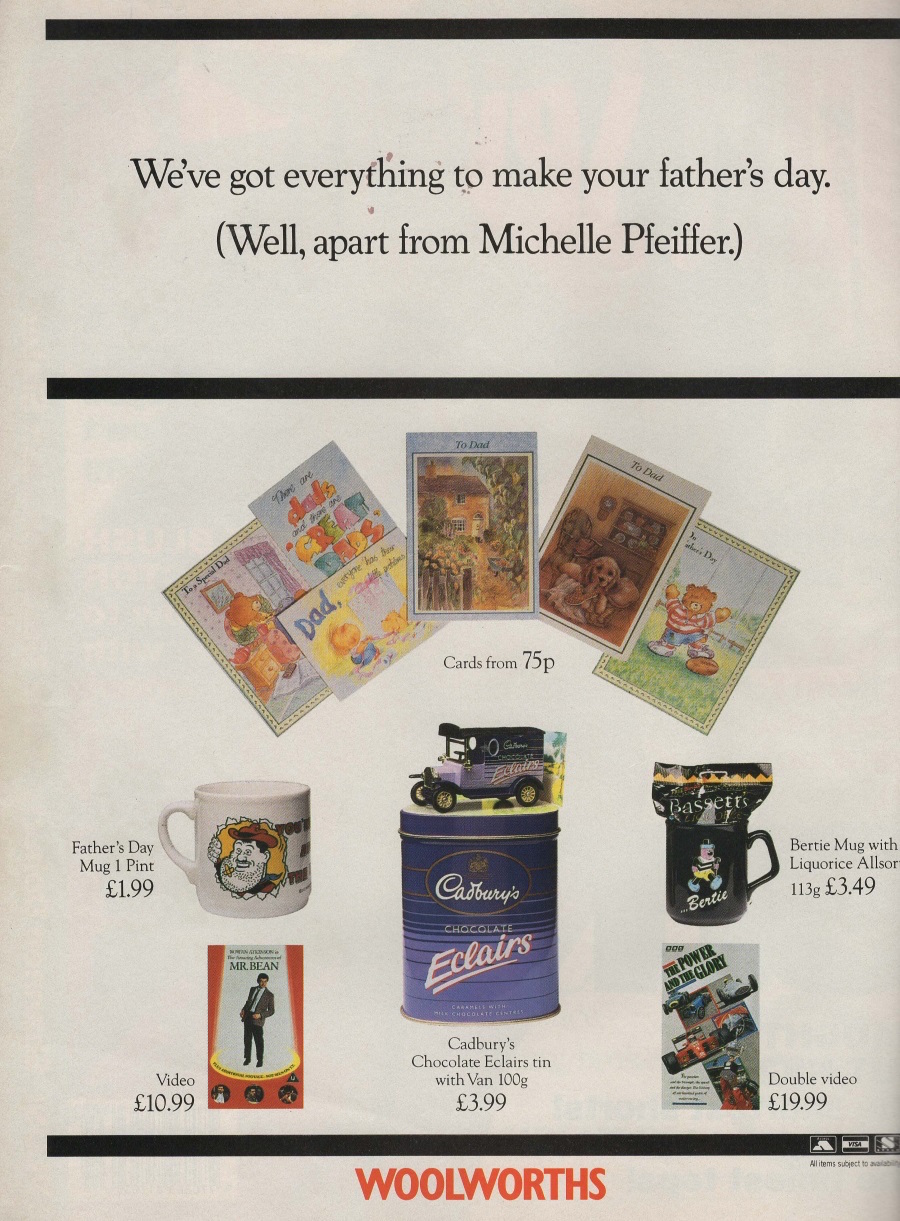The British version of F.W. Woolworth Company was founded by Frank Woolworth in Liverpool in November 1909 when he wrote in his diary:
I believe that a good penny and sixpence store, run by a live Yankee, would be a sensation here.
The first American store had opened thirty years previously in Pennsylvania on June 21 1879. It was unique at the time because it actually displayed the price of items.
The first British shop opened at 25 – 25A, Church Street and 8, Williamson Street Liverpool [18] (the street addresses of the different entrances) on 5 November 1909 with a performance by a full orchestra, circus acts and fireworks.The shop was an immediate success with large queues outside. The low priced 3d. and 6d. (“threepenny and sixpenny”) items were nearly all sold by the end of the first day of trading. The fine mahogany counters were stacked full of china and glassware, all at much lower prices than in other British stores…. The secret was mass production, with Woolworths placing big orders, paid for in cash, to secure better prices.”
At the onset of the First World War, F.W. Woolworth & Co. had forty shops in Great Britain and Ireland located in most major cities. By 1923 there were 130 branches, and William Lawrence Stephenson (1880–1963) became managing director. He implemented a strategy of major expansion, with the company buying or building freehold properties. Many of the stores had distinctive faience tiled art deco frontages. The expansion was funded entirely out of earnings and without any borrowing or further capitalisation.
The 800th branch, at Wilton Road, Victoria, London, opened in September 1953. On 22 May 1958, the 1000th branch (known as “Portslade” to distinguish it from the existing Hove branch) opened in Boundary Road, Hove. The peak of 1,141 branches was reached in the 1968.
Rising inflation in the 1970s forced many Woolworths to close down, but by 1980 the company’s finances were healthy enough to allow it to buy B&Q. The group was then soon taken over by Kingfisher, and in 2001 Woolworths was floated as an independent British company. It faced the challenge of injecting new life into a well loved but tired brand. This never really worked and on 5 December 2008, Woolworths recorded their greatest single day takings of £27 million but also axed 450 head office and support staff jobs. A closing-down sale started six days later on 11 December.
On 17 December 2008, administrators announced that all 807 Woolworths stores would close by 5 January 2009 (later changed to 6 January), with 27,000 job losses. Prime Minister Gordon Brown noted that the Government had considered saving Woolworths, but they concluded that it was a “financially unviable” business.
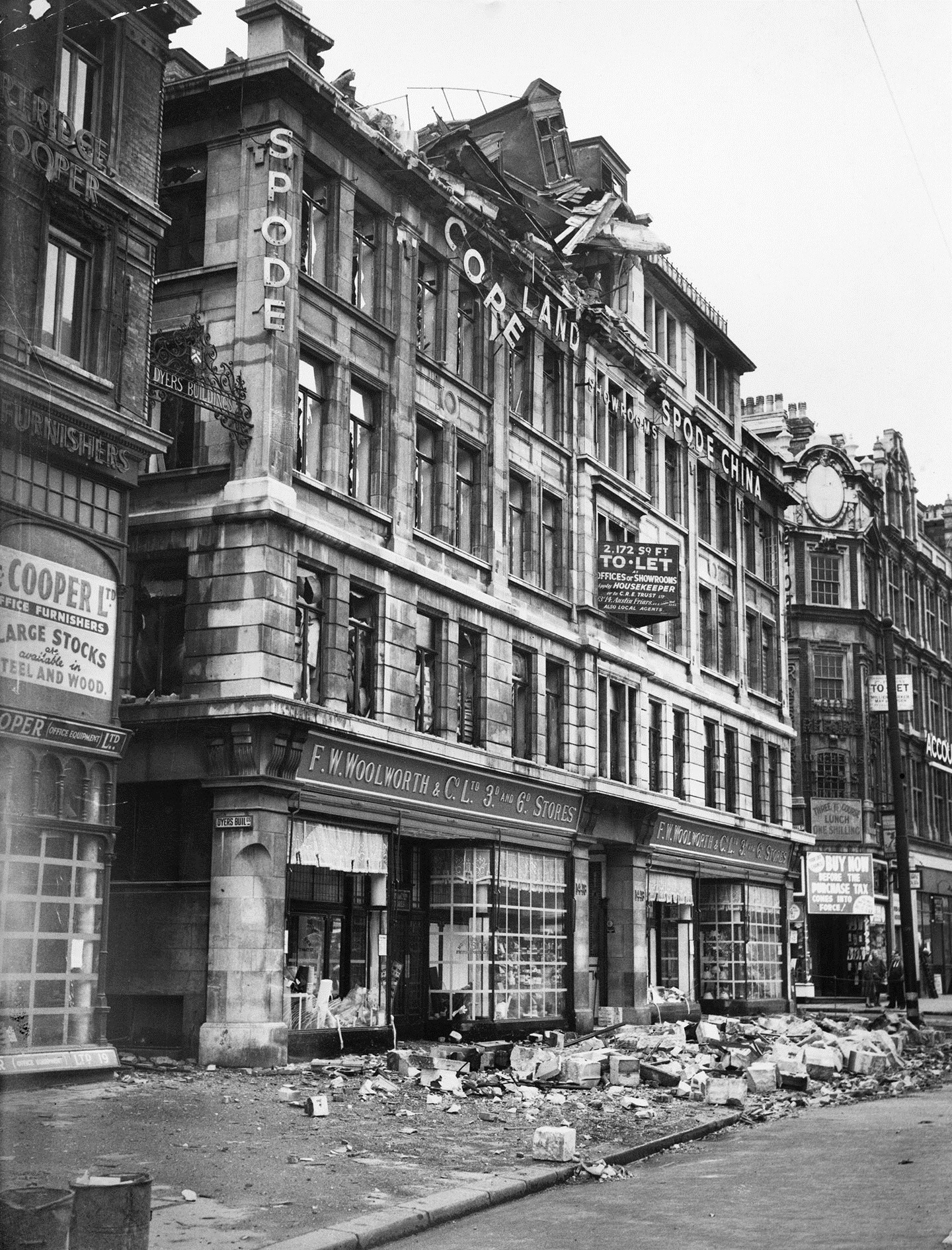
High Holborn Woolworths, London, photograph taken in the immediate aftermath of bombing 8 October 1940
Would you like to support Flashbak?
Please consider making a donation to our site. We don't want to rely on ads to bring you the best of visual culture. You can also support us by signing up to our Mailing List. And you can also follow us on Facebook, Instagram and Twitter. For great art and culture delivered to your door, visit our shop.
